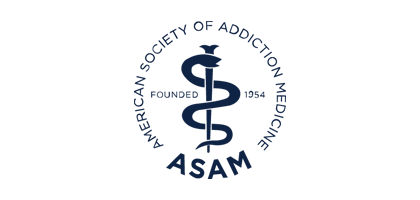News
Guest Editorial – Reconceptualizing Recovery: Findings from the National Survey on Drug Use and Health
By Emily Pasman, PhD, LMSW
With helpful feedback from Tess K. Drazdowski, PhD, Rebecca J. Evans-Polce, PhD, Ty S. Schepis, PhD, Curtiss W. Engstrom, MS, Vita V. McCabe, MD, and Sean Esteban McCabe, PhD.
Of the estimated 48.5 million Americans with a past-year substance use disorder (SUD), many will eventually seek recovery. 1 Broadly, recovery is a process through which people with SUDs achieve long-term health and wellness. While various definitions of recovery have been proposed, most center around elements of SUD symptom reduction and improved functioning across life domains, rather than substance use cessation. 2 In this way, recovery may involve
complete abstinence, reduction or moderation of use to a non-problematic level, or substitution of one drug with another that is perceived to be less harmful.
Indeed, a large body of research shows abstinence is not necessary for positive outcomes. For example, data from Project MATCH indicate some people with alcohol use disorder can reduce their use and sustain nonhazardous levels of drinking for up to 10 years post-treatment. 3 A systematic review of cannabis use among people receiving medications for opioid use disorder concluded cannabis use did not negatively impact treatment outcomes. 4 Further, people tend to be more successful in treatment when they are able to set their own goals, and when their goals are in alignment with those of their providers. 5
Yet, abstinence is the primary target of most SUD treatment and recovery services, and many health care professionals are unsupportive of nonabstinent goals. Research conducted among US specialty treatment providers shows acceptance of nonabstinence ranges from 15% to 47% based on SUD severity and goal finality. 6 Abstinence-only tenets are rooted in 12-step philosophy which conceptualizes addiction as an incurable disease. All people with addiction are considered powerless over their substance use such that moderation or controlled use is not a possible outcome. Thus, complete abstinence is promoted as the only feasible path to recovery. This philosophy has shaped the US approach to SUD care; in 2022, 92% of residential treatment programs included abstinence-based 12-step programming. 7 Research has similarly focused on abstinence as the primary outcome for assessing the efficacy of substance use services, which in turn dictates the services that are adopted and funded, and further marginalizes people with nonabstinent goals.
Treatment and recovery services can benefit people with both abstinent and nonabstinent goals, and close work with a health care professional is sometimes medically necessary. Unfortunately, most people who could benefit from treatment do not receive it, oftentimes because they do not want to stop using or because they prefer to recover without the use of professional services. 1 Aligning service offerings with the realities, goals, and preferences of the intended end user may
increase service engagement.
To inform the development of acceptable treatment and recovery support services, our team analyzed nationally representative data from the 2022 National Survey on Drug Use and Health (NSDUH) to examine past-month alcohol and other drug (AOD) use among adults in self- identified recovery. 8 We found that of 3,763 Americans who identified as currently in recovery from an AOD problem, nearly two-thirds (65.2%) reported past-month AOD use. Half (50.8%) reported past-month alcohol use and one-third (33.2%) reported past-month cannabis use. Smaller proportions reported past-month use of cocaine or methamphetamine (3.8%), hallucinogens (2.9%), heroin (0.8%), and nonmedical use of prescription drugs (3.0% opioids, 1.7% stimulants, 1.9% benzodiazepines).
Adults in abstinent and nonabstinent recovery did not differ significantly on multiple measures of functioning. For example, abstinence was not associated with employment, criminal legal system involvement, psychological distress, or self-reported health. However, compared to those who were abstinent, adults in nonabstinent recovery were more likely to meet criteria for a past-year DSM-5 SUD. From this exploratory, cross-sectional study, we can’t be certain whether an individual’s SUD symptoms occurred prior to or following the initiation of their current recovery. It could be that adults reporting past-month AOD use were more likely to be within their first year of recovery compared to those who were abstinent. This potential explanation is supported by research that shows recovering persons become more likely to seek abstinence. over time. 9 However, there may be people who identified as in recovery while using AOD symptomatically. Regardless of temporality, these findings underscore the importance of expanding the scope and reach of recovery support services to engage people who are not currently abstinent.
Adults in abstinent and nonabstinent recovery differed on certain sociodemographic and psychosocial characteristics, pointing to subpopulations of recovering persons who may particularly benefit from a harm reduction approach that supports “any positive change” or step toward less problematic use. 10 For example, lesbian/gay-identified individuals were more likely to report nonabstinent recovery than their heterosexual/straight-identified counterparts, suggesting the availability of nonabstinent services may increase engagement among this group that is disproportionately affected by SUDs. 11 We also found greater religiosity and greater odds of past-year mutual aid attendance among those in abstinence-based recovery. These findings may be attributed to the broader accessibility of 12-step groups – which promote complete abstinence through spiritual practices – relative to nonabstinent and secular forms of mutual aid
(eg, SMART Recovery).
Our study indicates a need to reconceptualize recovery in addiction research and practice. First, providers must reconsider policies that punish or exclude people who use drugs. 12 The practice of automatically discharging people from treatment who fail to abstain from AOD use is misaligned with an extensive body of research associating longer treatment duration with better outcomes. 13 Second, to more effectively engage people with nonabstinent goals, addiction medicine specialists can incorporate evidence-based harm reduction strategies, such as motivational interviewing 14 and models of psychotherapy that focus on skill-building and therapeutic alliance. 15 Third, addiction research and practice should target outcomes beyond abstinence, such as reduced risky behaviors (eg, solitary use) and improved health and quality of life. However, a critical first step is recognizing the biases that exist within the field. While empirical support for harm reduction is well established, services supporting nonabstinent recovery are not widely implemented. Life-saving interventions will continue to be underused until we address stigma at both the system and provider levels.
Finally, we would be remiss to not underscore the value of the NSDUH to the field of addiction medicine. Findings from this study challenge the popular notion of recovery, highlighting the importance of behavioral health metrics produced by national surveys. In the context of shifting national priorities and budgetary considerations, all efforts should be made to preserve this long-standing source of information on AOD use and mental health in the US. Having an accurate understanding of the national landscape of SUD recovery is fundamental to increasing the acceptability, uptake, and impact of treatment and recovery services.
Emily Pasman is a licensed social worker and assistant professor at the University of Illinois Chicago Jane Addams College of Social Work. Her research aims to improve health equity for people who use drugs by expanding harm reduction interventions; supporting affected family members; and addressing disparities in service access, uptake, and outcomes.
References
1. Substance Abuse and Mental Health Services Administration. Key Substance Use and Mental Health Indicators in the United States: Results from the 2023 National Survey on Drug Use and Health. Center for Behavioral Health Statistics and Quality, Substance Abuse and Mental Health Services Administration; 2024. https://www.samhsa.gov/data/report/2023-nsduh-annual-national-report
2. Ashford RD, Brown AM, Brown T, et al. Defining and operationalizing the phenomena of recovery: a working definition from the recovery science research collaborative. Addict Res Theory. 2019;27(3):179-188. doi:10.1080/16066359.2018.1515352
3. Witkiewitz K, Wilson AD, Roos CR, et al. Can individuals with alcohol use disorder sustain non-abstinent recovery? Non-abstinent outcomes 10 years after alcohol use disorder treatment. J Addict Med. 2021;15(4):303. doi:10.1097/ADM.0000000000000760
4. Lake S, St. Pierre M. The relationship between cannabis use and patient outcomes in medication-based treatment of opioid use disorder: A systematic review. Clin Psychol Review. 2020;82:101939. doi:10.1016/j.cpr.2020.101939
5. Paquette CE, Daughters SB, Witkiewitz K. Expanding the continuum of substance use disorder treatment: Nonabstinence approaches. Clin Psychol Rev. 2022;91:102110. doi:10.1016/j.cpr.2021.102110
6. Rosenberg H, Grant J, Davis AK. Acceptance of non-abstinence as an outcome goal for individuals diagnosed with substance use disorders: A narrative review of published research. J Stud Alcohol Drugs. 2020;81(4):405-415. doi:10.15288/jsad.2020.81.405
7. Beetham T, Saloner B, Gaye M, Wakeman SE, Frank RG, Barnett ML. Therapies offered at residential addiction treatment programs in the United States. JAMA. 2020;324(8):804-806. doi:10.1001/jama.2020.8969
8. Pasman E, Evans-Polce RJ, Schepis TS, et al. Nonabstinence among US adults in recovery from an alcohol or other drug problem. Journal of Addiction Medicine. 2025;19(3):338. doi:10.1097/ADM.0000000000001408
9. Enggasser JL, Hermos JA, Rubin A, et al. Drinking goal choice and outcomes in a Web- based alcohol intervention: Results from VetChange. Addictive Behaviors. 2015;42:63-68. doi:10.1016/j.addbeh.2014.10.036
10. Szalavitz M. Undoing Drugs: The Untold Story of Harm Reduction and the Future of Addiction. Hachette Books; 2021.
11. Schuler MS, Rice CE, Evans-Polce RJ, Collins RL. Disparities in substance use behaviors and disorders among adult sexual minorities by age, gender, and sexual identity. Drug and Alcohol Dependence. 2018;189:139-146. doi:10.1016/j.drugalcdep.2018.05.008
12. American Society of Addiction Medicine. Engagement and Retention of Nonabstinent Patients in Substance Use Treatment: Clinical Considerations for Addiction Treatment Providers. October 2024. https://www.asam.org/quality-care/clinical- recommendations/asam-clinical-considerations-for-engagement-and-retention-of-non-abstinent-patients-in-treatment
13. Zhang Z, Friedmann PD, Gerstein DR. Does retention matter? Treatment duration and improvement in drug use. Addiction. 2003;98(5):673-684. doi:10.1046/j.1360- 0443.2003.00354.x
14. Schwenker R, Dietrich CE, Hirpa S, et al. Motivational interviewing for substance use reduction. Cochrane Drugs and Alcohol Group, ed. Cochrane Database of Systematic Reviews. 2023;2023(12). doi:10.1002/14651858.CD008063.pub3
15. Denning P, Little J. Practicing Harm Reduction Psychotherapy. Guilford Publications; 2024.
Listen to Dr. Pasman’s recent JAM podcast episode of This Week in Addiction Medicine:
ASAM Weekly Special Episode: Rapid Initiation of Injection Naltrexone for OUDDr. Matisyahu Schulman & Dr. Adam Bisaga



